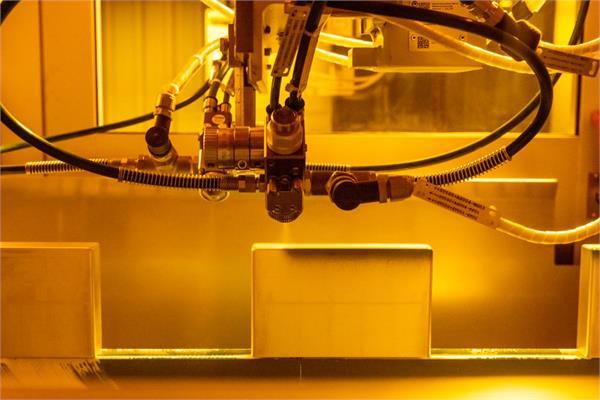
BMW will install a total of five cell coating lines to expand the production of components for fully electric vehicles.
BMW Group has announced that its first cell coating line has gone into series operation for battery modules production at the manufacturing site in Leipzig (Germany). Over the year, the company will install other four lines, to expand the production of components for fully electric cars.
The plant, which already includes two module assembly lines, will also be implemented by a third. Covering 2,300 m2, the new cell coating system is in the former manufacturing hall of the BMW i3, where production was phased out in the summer of 2022. Straight afterwards, the space was converted for e-component in less than six months.
The new coating line can handle more than 10 million cells a year (over 2,300 an hour), that will then be used on the battery module production for the fully electric BMW i4* and BMW iX1*. A further line at the facility is producing battery modules for BMW iX*.
“From 2024 our plant here in Leipzig will be able to run the entire process chain for high-voltage battery production. So, we will be making an important contribution to the transformation to electromobility. To meet the goal of fully electric vehicles accounting for at least half of all sales by 2030, we are investing more than €800 million to establish and develop e-component production at BMW Plant Leipzig,” has declared Markus Fallböhmer, the head of battery production for the BMW Group.
The coating of lithium-ion cells
High-voltage battery production happens in three highly-automated stages: cell coating, module production and assembly of the battery itself. The coating of lithium-ion cells consists first of pre-treating and patterning with a laser beam “chiseling” a texture into the outside of the uncoated cell, in order to increase its surface area and reduce the surface tension of the aluminium casing. Next, the cells are plasma-cleansed to remove any dirt particles and oxides and improve the adhesiveness of the surface.
The actual painting process is carried out by a specially developed machine that coats the cells in two layers, which are then hardened by UV, offering the best possible insulation. Finally, a fully automated three-stage quality control process is carried out. Once coated, the battery cells are assembled into larger modules and fitted into an aluminium housing along with the control and cooling units and the connectors – that will connect them to the vehicle.
“This is a long-term investment in the future of the Leipzig plant. The expansion of the plant would not only safeguard current jobs but also create new ones. At present, more than 800 employees work in e-component production at our Leipzig site. By 2024 there will be more than 1,000,” has explained Petra Peterhänsel, the director of the plant.